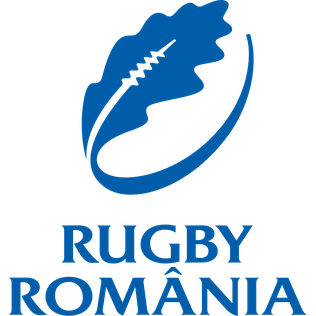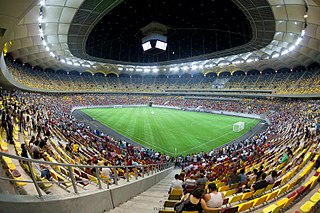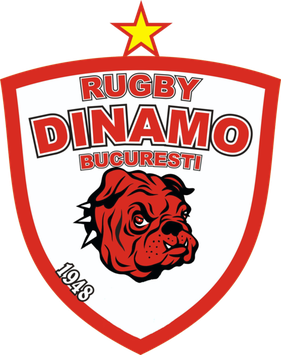
The Romania national rugby union team represents Romania in men's international rugby union competitions. Nicknamed Stejarii, the team is long considered one of the stronger European teams outside the Six Nations. They have participated in all but one Rugby World Cup and currently compete in the first division of the European Nations Cup, which they won in 2017. Rugby union in Romania is administered by the Romanian Rugby Federation.

The Cupa României is a football cup competition for Romanian teams which has been held annually since 1933–34, except during World War II. It is the country's main cup competition, being open to all clubs affiliated with the Romanian Football Federation (FRF) and the county football associations regardless of the league they belong to. Currently, the winner of the competition is granted a place in the UEFA Europa League qualifiers and plays the Supercupa României.

The Supercupa României is a Romanian football championship contested by the winners of the Liga I and the Cupa României. It is usually played at the Arena Națională in Bucharest.
The Liga Națională de Rugby is a professional rugby union club competition that is played in Romania. In the 2023 season there are 14 teams competing. The competition was established in 1913 and is governed by the Romanian Rugby Federation. Steaua București is the most successful club in the competition with 24 titles.

Football is the most popular sport in Romania. The Romanian Football Federation, a member of UEFA, is the sport's national governing body.

Florin Vlaicu is a Romanian former rugby union player. He last played as a fly half or centre for Liga Națională de Rugby club SCM Timișoara. He could also play as a fullback, thus being considered a utility back due to his versatility. He is Romania's all time leading point scorer and the most capped player for his nation.

CS Dinamo București is a professional Romanian rugby union club from Bucharest, which plays in the Liga Națională de Rugby, the first division of Romanian rugby. They are the second most successful rugby union team in Romania with 16 championship titles, 12 cup titles and even a Champions League title to their name. After a pause of 15 years, Dinamo won the 2023 Liga Națională de Rugby season, denying rival CSM Știința Baia Mare a 5th historic consecutive title.
The Eternal derby, also called the Romanian derby or the Great derby, is a football match between Bucharest rivals FCSB and Dinamo București. The game is usually among—if not the most—viewed and attended of the Liga I season. The two most successful clubs in Romania, they won a combined 94 honours: a record 60 for Steaua/FCSB and 34 for Dinamo București. It is the equivalent of Spain's El Clásico and France's Le Classique.

CSA Steaua București is a professional Romanian rugby union club from Ghencea, south-west Bucharest, which plays in the Liga Națională de Rugby, the first division of Romanian rugby. They are the most successful rugby union team in the Romania with 24 championship titles and 15 cup titles to their name. Steaua București`s annual operating budget for the 2022–23 season is approximately 1,925,000 Euros.

CSM Știința Baia Mare is a professional Romanian rugby union club from Baia Mare, which plays in the Liga Națională de Rugby, the first division of Romanian rugby. In recent times they have been the most successful rugby union team in Romania, achieving eight championship titles and three of the Romanian cups, with the latest title being achieved in the 2022 season. CSM Baia Mare is recently one of the main players providers for the Romanian national team and its youth academy is one of the best in Romania. Eugen Apjok, the current manager, is also managing the Romanian national team.
The 2013 Supercupa României was the 15th edition of the Supercupa României, the annual super cup in Romania.
The 1938 Cupa României Final was the fifth final of Romania's most prestigious football cup competition. It was disputed between CAM Timișoara and Rapid București, and was won by Rapid București after a game with 5 goals. It was the third cup for Rapid, and the second of six consecutive successes.
The 1951 Cupa României Final was the 14th final of Romania's most prestigious football cup competition. It was disputed between CCA București and Flacăra Mediaş, and was won by CCA București after a game with 4 goals. It was the third cup title in the history of CCA București.
The 1955 Cupa României Final was the 18th final of Romania's most prestigious football cup competition. It was disputed between CCA București and Progresul Oradea, and was won by CCA București after a game with 9 goals, in extra time. It was the 5th cup for CCA București.
The 1960 Cupa României Final was the 22nd final of Romania's most prestigious football cup competition. It was disputed between Progresul București and Dinamo Obor București, and was won by Progresul București after a game with 2 goals. It was the first cup for Progresul București.
The 1967 Cupa României Final was the 29th final of Romania's most prestigious football cup competition. It was disputed between Steaua București and Foresta Fălticeni, and was won by Steaua București after a game with 6 goals. It was the 8th cup for Steaua București.
Dumitru Alexandru is a Romanian former rugby union player, who played as fly-half. Since 2000, he has been a talent scout and President of the Disciplinary Committee for F.F.R. and since 2014 a member of the Commission for the Status and Transfer of Players.
The 1976 Cupa României Final was the 38th final of Romania's most prestigious football cup competition. It was disputed between Steaua București and CSU Galaţi, and was won by Steaua București after a game with only one goal. It was the 12th cup for Steaua București.
The 1982 Cupa României Final was the 44th final of Romania's most prestigious football cup competition. It was disputed between Dinamo București and FC Baia Mare, and was won by Dinamo București after a game with 5 goals. It was the forth cup for Dinamo București.
RC Grivița București is a Romanian rugby union club currently playing in the Liga Națională de Rugby. They have won the Liga Națională de Rugby 12 times and the European Rugby Champions Cup in 1964.









